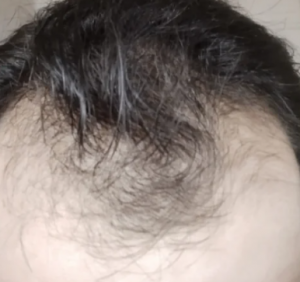My question is, can miniaturized hair stabilize? What I mean by that is usually miniaturized hair continues to shrink and get smaller and narrower with each growth cycle until it eventually falls out and stop growing altogether. But can miniaturized hair miniaturize or narrow to just a certain point and then stop/stabilize at that level and not continue to the point where it eventually stops growing? I ask because I believe I have some miniaturized hairs that have been that way for over 10 years and have not changed. Also because I’ve noticed that in a lot of bald men, even those with a Norwood 7 pattern, they often aren’t “slick bald” and have some sporadic hairs remaining on top that seem to remain there permanently.Also, how do you know when hair loss as whole has stabilized on a particular person? I ask because it’s often stated/recommended for people to wait until their 30’s for a hair transplant so you have an idea of what their final pattern is and when it is stabilized. But from what I read, can’t hair loss stop, start and pick up/ slow down at different intervals throughout peoples lives?So if a person at 38 years old has a Norwood 3 pattern based on visualizing their scalp/ miniaturization studies with haircheck or whatever, and it hasn’t progressed in a few years so it’s determined for the time being it’s stable and they decide to go forward with a hair transplant; how is it known that in 2, 5, 10 years etc down the road that it won’t pic up again and other areas of the scalp won’t start miniaturizing and end up in a full Norwood 6/7 pattern or whatever?
Great questions. The concept of miniaturization leading to eventual apoptosis (death) is accepted as the standard process description. Like you, I have seen some men retain their miniaturized hair for years without growth. I expect that there is some timeline that these hairs will eventually follow the apoptosis model. With medication, the process can be slowed. I, too, have seen some Class 7 patients who have some residual both miniaturized hairs and even a few normal terminal hairs. I remember one man who gave hear of his terminal hairs a name, and when I transplanted him, he was going to check on the welfare of these named hairs. When he came back the next day, I asked him about his ‘hair’ friends, and he said: “After seeing what you gave me. I don’t care about them any longer”.


